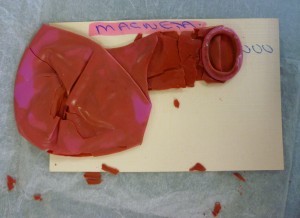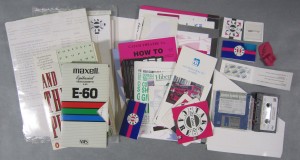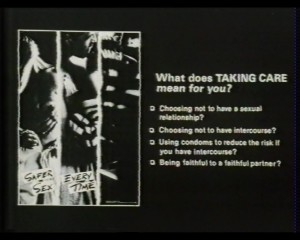My name is Emily and I am Project Conservator at Lothian Health Services Archive. LHSA is based at the Centre for Research Collections, where we share a conservation studio with Emma Davey, Conservation Officer for the CRC, and two private conservators.
Lothian Health Services Archive holds the historically important local records of NHS hospitals and other health-related material. I am currently working on a 12-month Wellcome Trust-funded project to conserve LHSA’s HIV/AIDS collections. This material documents the social and medical response to the HIV/AIDS epidemic in Edinburgh and the Lothians from 1983 to 2010. The first suspected case of HIV/AIDS in Scotland was discovered in Edinburgh in 1983. The infection rate in the city steadily grew and by 1989 it was seven times higher than the national average, which led to Edinburgh being dubbed the “AIDS capital of Europe” in the national press. This is material of vital importance which comprehensively documents an important part of medical history. In 2011 the collections were inscribed to the UNESCO UK Memory of the World Register which emphasises its importance to national documentary heritage.
The collections are made up of a variety of media, mostly loose paper documents, leaflets and postcards but also badges, stickers, photographs, 35mm slides and canvas and plastic bags, as well as rubber and latex items such as condoms and balloons.
Many people assume that modern collections such as this do not require conservation, however this is not the case, and there are already items in this collection that are severely damaged. For example, previous storage has led to planar distortion, creasing, tearing and the accumulation of surface dirt on paper documents. Low quality materials used in paper making has also resulted in deterioration of paper sheets.

Paper documents in the HIV/AIDS collections. Plastic paper clips causing planar distortion of the sheets.
Damage to other items is often due to the inherent nature of the object. For example, rubber items such as the balloons have become brittle due to loss of plasticiser and objects have become stuck together due to the migration of adhesives.

A balloon from the HIV/AIDS collections. Loss of plasticiser has caused the balloon to become very brittle.
There is also a collection of digital media such as 3.5” floppy disks, VHS, audio cassette tapes and film reels which have been transferred to modern storage facilities to avoid loss of information due to obsolescence of the viewing equipment.
In this project, conservation of paper materials mainly involves the re-housing of paper items in acid-free folders and boxes and carrying out basic conservation treatment such as surface cleaning, tear repair and flattening if needed. Conservation of non-paper materials mainly focuses on re-housing the objects in appropriate archival storage, rather than on interventive treatment.
I really enjoy working with this diverse range of material in this collection. When I graduated last year specialising in paper conservation, I never thought I would be working with such modern materials. So since starting here, I’ve had to research plastic conservation and digitisation methods and develop new ways of storing modern objects with paper collections, which I’ve found challenging and fun! With more and more modern materials becoming deposited in archives, I believe skills gained in this project will be really useful in the future, and I’m glad I’ve had the opportunity to work with such a varied and interesting collection.
If you’d like to find out more about this project and the conservation of modern materials, please visit our blog.
Emily Hick Project Conservator Lothian Health Services Archive Emily.Hick@ed.ac.uk


